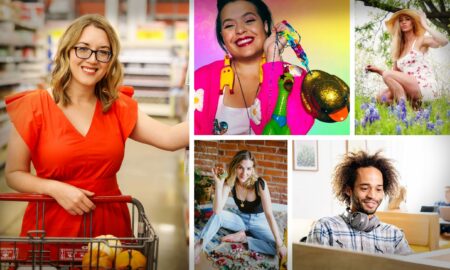

Today we’d like to introduce you to Amy Scofield.
Hi Amy, so excited to have you on the platform. So before we get into questions about your work-life, maybe you can bring our readers up to speed on your story and how you got to where you are today?
I grew up in the mountains in Colorado and nature was pretty much another sibling. My friends and I entertained ourselves with our imaginations and created worlds and inhabitants with sticks, rocks and pinecones, befriending the bugs and critters we met. It was an era when we were all learning “we’ve got to pitch into Clean Up America” so I’ve been basically a compulsive conscious consumer since the beginning. I always imagined being an artist and I am still discovering what that means. Appreciation and conservation of nature are the soil my artwork springs from.
Can you talk to us a bit about the challenges and lessons you’ve learned along the way. Looking back would you say it’s been easy or smooth in retrospect?
After years of trying to do “creative work” I finally developed the courage to start making art for the sake of making it. I’d worked in the (low-budget) film industry, advertising as a food and prop stylist, retail visual merchandising, etc and when, at a major crossroads, I decided it was time to pursue my scary dream. The biggest obstacle is that being an artist is basically making useless objects for no reason. So yes, it’s a constant challenge. There is absolutely no path to follow, no rules, no strategy and also no promise, or really even hope, of success. It’s quite pointless and in a society where most are identified by their jobs and how they make money, it’s a challenge to even feel relevant, except with other artists who get it. Unless one’s work is about beauty there’s a limited market for it so generating revenue, even just getting seen (applying for exhibitions, galleries, grants) takes up a shocking amount of time, sitting at a computer.
Something that has been gratifying is when I’ve taught workshops on Mindfulness through Artmaking, where the focus is on the process not the product. It’s an empowering experience and I particularly love doing it with kids who don’t normally get to play outside and experience making their own decisions with no pressure.
Despite the challenges, the payoff for me is freedom. I treat my every whim as my job. I indulge my intuition and thoughts, exploring alleys and vacant factories, searching for inevitable, dependable surprises. I’m limitless in my pursuit of my ideas.
My life is a grown-up, urban version of my childhood!
As you know, we’re big fans of you and your work. For our readers who might not be as familiar what can you tell them about what you do?
Historically, I’ve been a materials and process artist. I’m drawn to heaps of leftovers. I explore their properties until a design emerges and then I try to figure out how to construct it. I rarely do the same thing twice so it always feels like inventing or prototyping; endless problem-solving. I’ve used thousands of discarded bike tubes, zillions of salvaged Mylar strips from mailing envelopes, dozens of yards of recycled City water pipe, hundreds of dead trees, piles of plastic bottles, or a forest full of twisty vines to create works that invite the viewer to think and see more deeply.
These past few years, I’ve become overwhelmed and discouraged by all the stuff people keep buying and wasting and am feeling a change of course. I’m exploring dissolution, impermanence and the impromptu, and my work is shifting toward interaction with shadows and reflections, the phantom twins of form. I’ve begun creating work from gathered mud, sawdust and scraps of previous works through sight-responsive installation and in situ sculpture, photos and video. I’d like to get to a point when all my work either disappears, dust to dust, or exists in ones and zeroes.
Before I give up the tangible altogether, I dream of building a commissioned installation from manipulated plastic bottles, but in the meantime, I’ve created small works and also a line of elegant jewelry from the same material. Each piece is a tiny sculpture that shows the wearer’s commitment to helping the planet.
What has been the most important lesson you’ve learned along your journey?
Life is made of moments and this moment is perfect. There is something worth seeing, anywhere, if you look.
Contact Info:
- Email: amyscofieldartist@gmail.com
- Website: www.AmyScofield.com
- Instagram: @amyscofieldartist @amysco @Seacological_Effects
- Facebook: AmyScofieldArtist









Image Credits
Personal Photo by Carl Scofield













